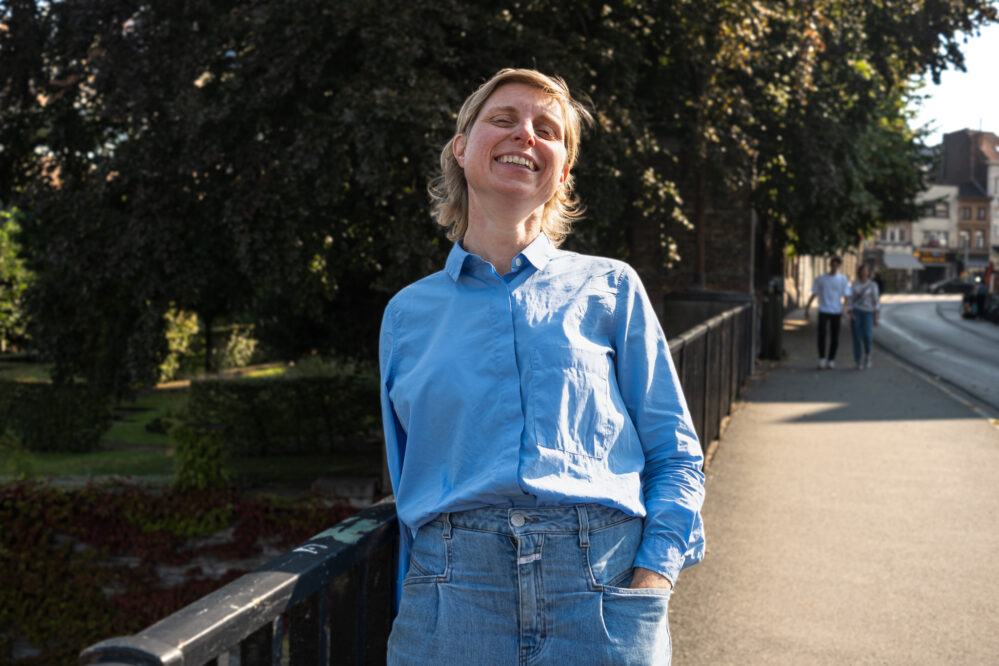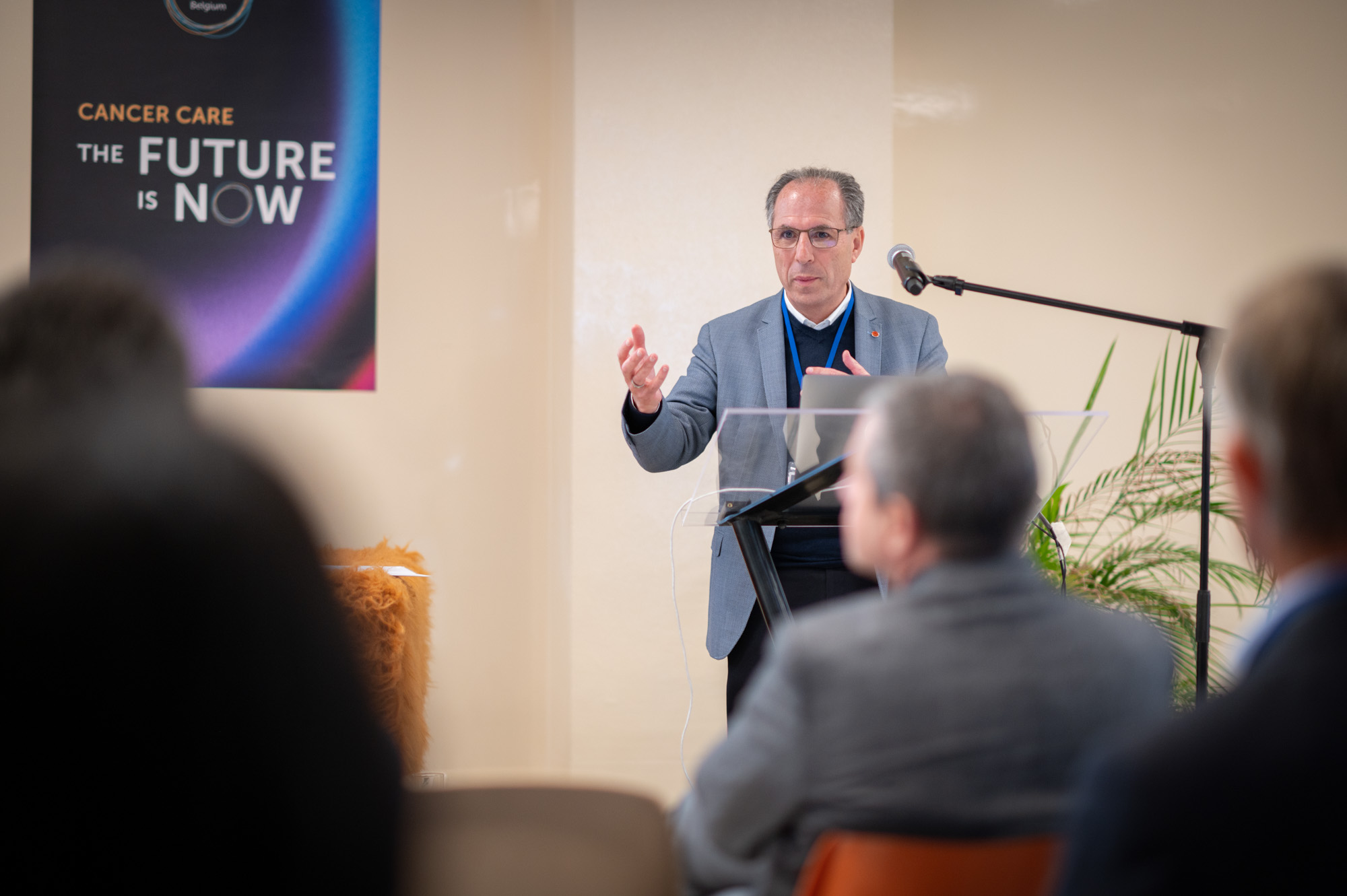In the 23 years since her diagnosis, Freya has faced relapses, metastases and even a shoulder amputation. “I discovered the lump under my arm by chance after getting out of the bath. I didn’t have any other symptoms,” Freya explains.
“The logical first step was to see my GP. He thought it was just a fatty lump and advised I have it removed when convenient.”
‘Because I was so young, no physician ever considered that it might be cancer.”
“My mother wasn’t entirely convinced, though, and through acquaintances, I ended up on a neurosurgeon’s operating table. Only during surgery did the doctors realize something was wrong. Because I was so young, neither the GP nor the neurosurgeon suspected it could be cancer.”
Asking questions, making choices
“I’ve been monitored as a patient for half of my life now, and over that time, quite a few things have changed,” Freya says. “Where cancer was once often a death sentence, many cancers can now be cured or at least stabilized thanks to innovative treatments.”
“At the same time, there’s a growing need for communication. Patients no longer blindly accept everything their healthcare providers tell them. They ask questions and want to make decisions together with their doctors. But for that to happen, they need clear and sufficient information from their doctors.”
“For example, my professor once asked me how often I wanted to come in for check-ups. It’s quite special to be able to answer a question like that. But to make an informed choice, I need to fully understand my options and what they entail.”
Information overload
“When I was diagnosed more than 20 years ago, there was information available, but it was often negative and overwhelming. I only came across stories with tragic endings,” Freya continues. “At the time, there were no patient organizations, cancer coaches, or support systems for patients and their families.”
‘At the time, I only came across stories online with tragic endings.’
“Even when budgets were eventually allocated for these services, as a patient with a rare cancer, I still felt a bit abandoned. Naturally, more research is focused on more common types of cancer.”
“That’s what motivated me to become the guide I had missed for other cancer patients: sharing my story from a patient’s perspective and putting it into video format. When you’re undergoing chemo, you often don’t have the energy to read. That’s how ‘Klare Kijk op Kanker’ (Clear View on Cancer, ed.) came to life.”
Positive and inspiring
“With support from my employer, MSD, ‘Klare Kijk Op Kanker’ has grown into a positive and inspiring information platform. From the feedback I receive, I realize how valuable it is for fellow patients not to have to explain how they feel—because I know all too well what they’re going through.”
“Now, the platform is ready to expand. We’ll soon be adding testimonies from a lung cancer patient and a melanoma patient, and we’ll be translating all the content into French. It’s exciting but also fascinating to approach the entire project from a new angle.”
Empowering patients
“Patient empowerment is about giving patients the confidence to ask questions and make decisions. But they can only do that if they have access to information that’s tailored to them. That’s what we aim to provide—through a platform where patients are at the heart of everything, in a positive way.”
“In the end, we need to keep pushing for progress at every stage of the cancer journey: from tailored information, recognizing warning signs, or timely referral to a specialist, to treatment in expert centers, access to innovative therapies, and sufficient attention on aftercare.”







